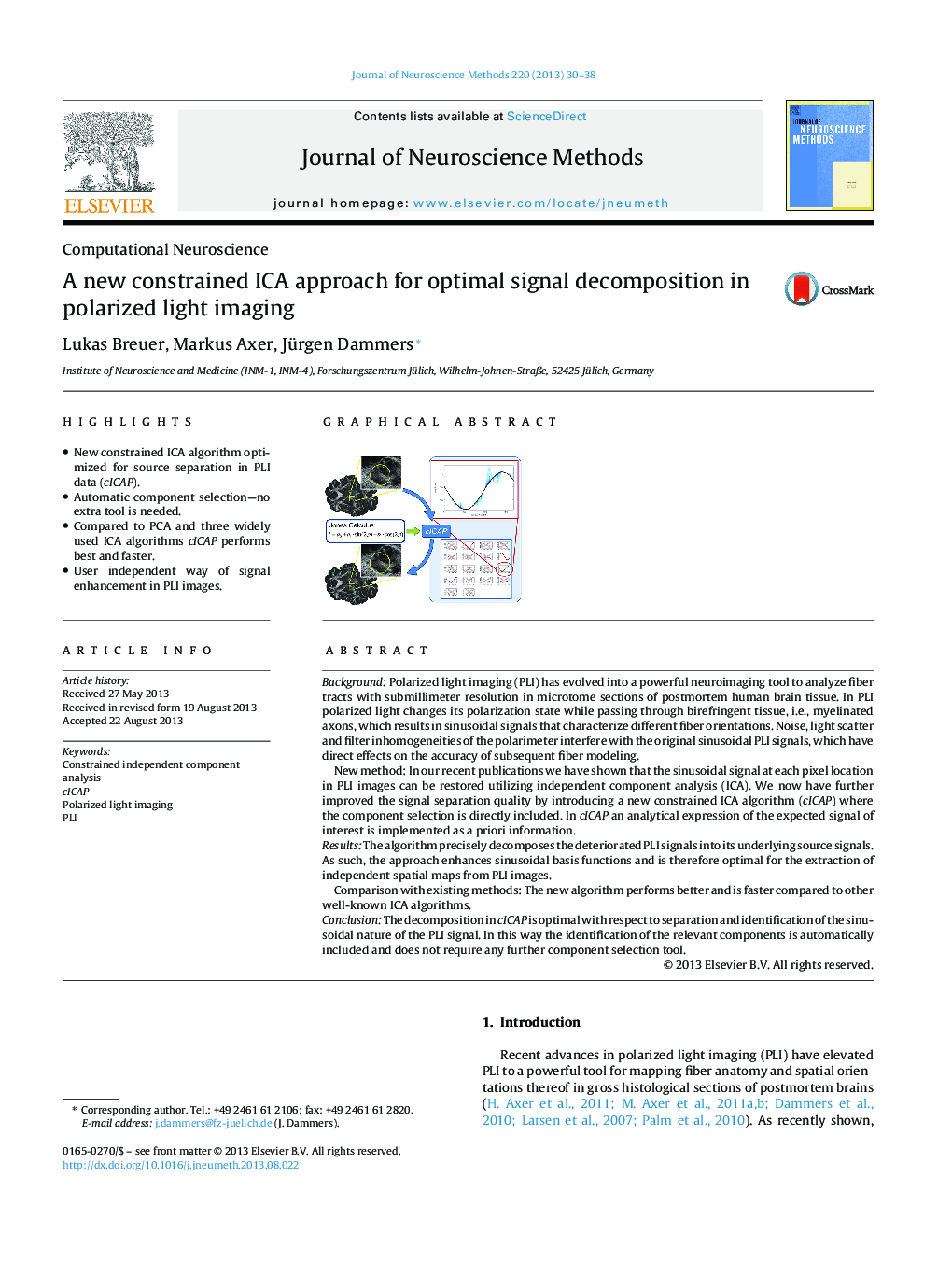| Article ID | Journal | Published Year | Pages | File Type |
|---|---|---|---|---|
| 6268937 | Journal of Neuroscience Methods | 2013 | 9 Pages |
â¢New constrained ICA algorithm optimized for source separation in PLI data (cICAP).â¢Automatic component selection-no extra tool is needed.â¢Compared to PCA and three widely used ICA algorithms cICAP performs best and faster.â¢User independent way of signal enhancement in PLI images.
BackgroundPolarized light imaging (PLI) has evolved into a powerful neuroimaging tool to analyze fiber tracts with submillimeter resolution in microtome sections of postmortem human brain tissue. In PLI polarized light changes its polarization state while passing through birefringent tissue, i.e., myelinated axons, which results in sinusoidal signals that characterize different fiber orientations. Noise, light scatter and filter inhomogeneities of the polarimeter interfere with the original sinusoidal PLI signals, which have direct effects on the accuracy of subsequent fiber modeling.New method: In our recent publications we have shown that the sinusoidal signal at each pixel location in PLI images can be restored utilizing independent component analysis (ICA). We now have further improved the signal separation quality by introducing a new constrained ICA algorithm (cICAP) where the component selection is directly included. In cICAP an analytical expression of the expected signal of interest is implemented as a priori information.ResultsThe algorithm precisely decomposes the deteriorated PLI signals into its underlying source signals. As such, the approach enhances sinusoidal basis functions and is therefore optimal for the extraction of independent spatial maps from PLI images.Comparison with existing methods: The new algorithm performs better and is faster compared to other well-known ICA algorithms.ConclusionThe decomposition in cICAP is optimal with respect to separation and identification of the sinusoidal nature of the PLI signal. In this way the identification of the relevant components is automatically included and does not require any further component selection tool.
Graphical abstractDownload full-size image
